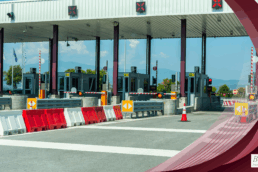Permanent residents who have remained outside of the United States for more than one calendar year and did not obtain a re-entry permit (https://berardiimmigrationlaw.com/immigration-blog/protect-your-green-card-status) prior to their trip abroad may be deemed to have abandoned their permanent resident status. However, permanent residents who were unable to return to the U.S. for reasons beyond their control may qualify for an SB-1 visa, also known as the Returning Resident Visa.
What are the requirements for an SB-1 Visa?
There are several requirements that must be fulfilled in order to qualify for an SB-1 visa. They are:
• You must have had the status of a lawful permanent resident at the time of departure.
• You must have departed the U.S. with the intention of returning.
• You are returning to the U.S. from a temporary visit abroad and were forced to stay abroad due to reasons beyond your control and which you were not responsible for.
What’s considered “reasons beyond my control?”
USCIS does not give specific examples of what may qualify as reasons beyond a person’s control. However, it is commonly understood that you will not qualify for the SB-1 visa if returning to the U.S. was simply inconvenient to you. For example, not returning to the U.S. because the job market was bad will likely not be considered a valid reason.
Some examples of reasons that are beyond your control could include:
• You became severely ill.
• You had a complicated pregnancy
• Your passport or other documents had been withheld
• You could not get permission to depart the country you are in.
Depending on the circumstances, there may be other extenuating reasons that could qualify you for an SB-1 visa. It’s important to note that, whatever the reason, you must provide solid evidence to support your claim. For example, if you became seriously ill, medical records would be considered solid evidence.
What is the process of obtaining an SB-1 visa?
In order to obtain an SB-1 visa, you must apply at a U.S. Embassy. For the list of embassies, please visit http://Users/davidlewis/Sites/berardi/app/public.usembassy.gov/. The first step is to schedule an appointment at a U.S. Embassy. At the time of your appointment, you will provide your identification, along with all of the required forms and evidence supporting your SB-1 visa application. You will also be interviewed by an officer. The officer will assess your family ties, employment, property ownership and other financial obligations in the United States. The main focus is on your intent to stay in the United States and the particular circumstances that prevented you from returning. This step is simply determining if you qualify for the SB-1 visa.
If the officer finds that you do qualify for the SB-1 visa, you will then be scheduled for a second interview at the embassy. This second interview will be to determine if you are now eligible for the immigrant visa. SB-1 visa applicants are subject to the same application processing fees, documentary requirements and medical requirements that apply to all immigrant visa applications.
If approved, the previous permanent resident card will remain valid. The SB-1 visa itself also serves as temporary proof of permanent resident status for a one-year period. The SB-1 process can be fairly quick depending on the processing times of the particular U.S. Embassy. Some cases have been completed in as little as two to three months.
If you have questions on obtaining an SB-1 Visa, please schedule a consultation with one of our immigration attorneys today!
Ready to have Berardi on your side?
Whether you’re a business looking to hire or a professional hoping to relocate, immigration law can be complicated. But you don’t have to do it alone. Put our experience to work for you.

